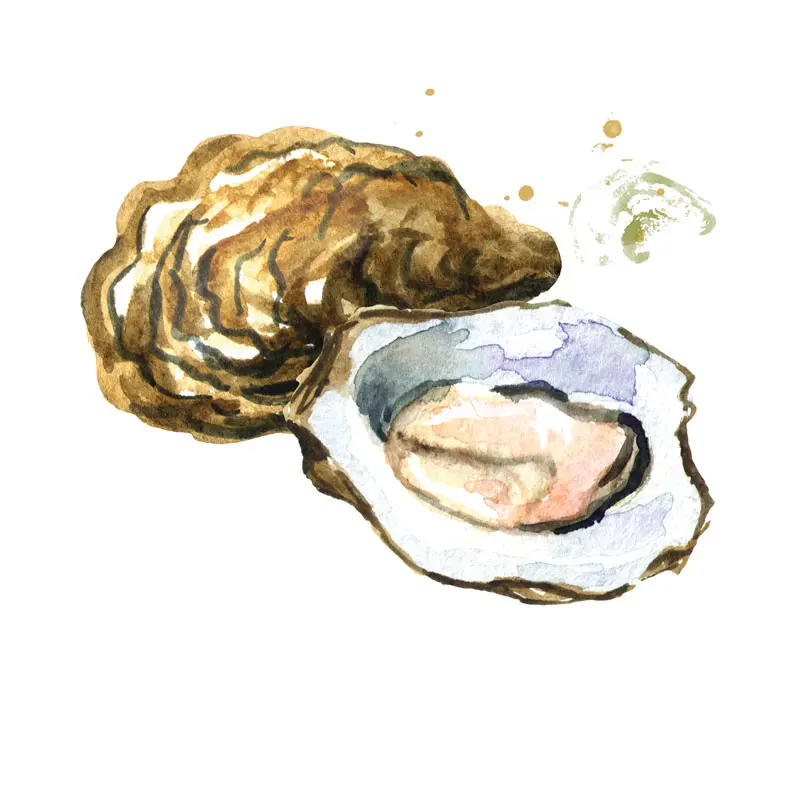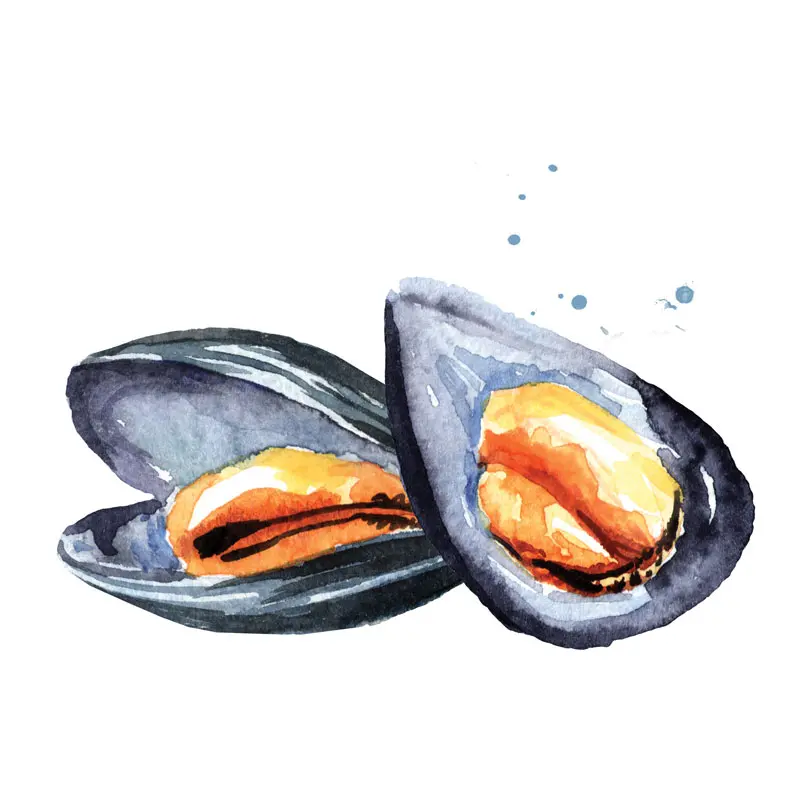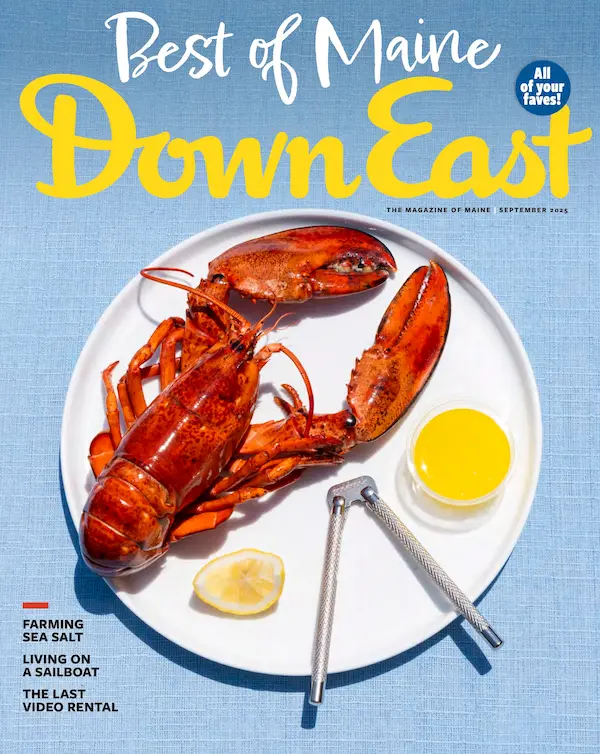By Joel Crabtree
From our September 2020 issue
Bivalves have been a big part of the regional diet ever since Native peoples started feasting on them millennia ago — ancient heaps of discarded shells along the Maine shore document as much. Several decades ago, Mainers started farming both oysters and mussels (clams, on the other hand, only made their aquacultural debut six years ago). Since then, each has enjoyed its moment in the culinary spotlight — mussels first, in the ’80s, when the New York Times announced them as “the mollusk of the moment,” followed by their shellfish cousins, with slews of oyster bars popping up across the country in recent years. On the Maine coast, though, neither ever really goes out of style. Shucks, in a head-to-head, they’re both winners.
OYSTERS

Maine are Eastern oysters,
but they’re often given specific names according to where they’re raised. Locale has a big impact on the taste and
texture of the meat.
Natural History
After glaciers retreated at the end of the last ice age, the Gulf of Maine was a temperate, shallow saltwater pool cut off from the rest of the Atlantic. Then, the sea rose and cooled, and oysters could only cling to warmer river mouths. Eventually, perpetual harvesting, continued sea-level rise, and environmental degradation wreaked by European settlers left only isolated pockets of remnant populations.
Farming
Almost all Maine oysters are the product of farming, a technique UMaine biologist Herb Hidu pioneered the 1970s. The oysters grow in floating mesh bags or cages that protect them from predators and prevent them from sinking to the seafloor.
Nutrition
A light snack: a half-dozen medium-size oysters provide about 140 calories, 14 grams of protein, and lots of minerals and vitamins. Or you bake them with cheese, butter, and bread crumbs, call them oysters Rockefeller, and forget the whole nutrition thing.
MUSSELS

Natural History
Until the past decade or so, mussel beds covered more than half of the Maine coast’s intertidal zone. Now, those beds cover maybe a tenth. Possible culprits range from hungry, invasive green crabs to ocean acidification and climate change to overharvesting.
Farming
In 1973, enterprising aquaculturist Ed Myers started the first U.S. mussel farm, in South Bristol. So far, farmed mussels, grown on ropes suspended from rafts, haven’t caught on like oysters, accounting for just 10 percent of the state’s total mussel haul.
Nutrition
An equal quantity of mussels, weight-wise, has more than double the protein of oysters. So you can feel okay about dredging a thick slice of bread through that buttery wine sauce they’re traditionally cooked in.
Images: Daria Ustiugova | shutterstock



